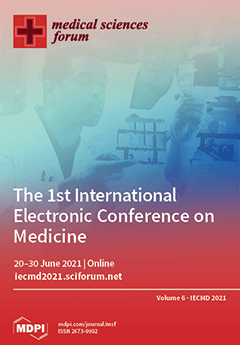Background and Objectives: Inflammation is a recognized factor in disease progression in both heart failure (HF) patients with reduced ejection fraction (HFrEF) and HF with preserved ejection fraction (HFpEF). Neutrophils take part in maintaining the pro-inflammatory state in HF. Hypercholesterolemia is stated to heighten neutrophil production, which contributes to accelerated cardiovascular inflammation. HF pathogenesis differences in the different HF phenotypes are yet to be investigated. Aim: To determine differences in complete blood count, C-reactive protein (CRP) concentration and lipidogram between chronic HF patients with an absence/presence of myocardial infarction (MI) history and preserved/reduced EF.
Materials and Methods: We separated the patients (
n = 266) according to chronic HF phenotype: (1) HFrEF patients (
n = 149) into groups according to presence of MI: those who had had no MI (
n = 91) and those with MI (
n = 58); (2) chronic HF without MI according to left ventricular ejection fraction (LVEF): LVEF ≥ 50%,
n = 117; LVEF < 50%,
n = 91. Laboratory and clinical readings (age, weight, pulse, blood pressure, and body mass index (BMI)) were taken from the patients’ medical histories.
Results: Mean corpuscular hemoglobin concentration (MCHC) was lower and red cell distribution width—coefficient of variation (RDW-CV) was higher in the lower EF group without a history of MI (337.32 (10.60) and 331.46 (13.13),
p = 0.004; 13.6 (11.5–16.9), and 14.7 (12.6–19.1),
p = 0.001). Lymphocyte percentage and lymphocyte-to-monocyte ratio (LYM/MON) were lower in the lower EF group without a history of MI (30.48 (10.87), 26.98 (9.08),
p = 0.045; 3.33 (1.22–9.33), 3 (0.44–6.5),
p = 0.011). In the group according to LVEF without MI neutrophil count positively correlated with weight (r
p = 0.196,
p = 0.024); lymphocyte count correlated with RDW-CV (r
s = −0.223;
p = 0.032) and body mass index (r
p = 0.186,
p = 0.032). RDW-CV and monocyte count correlated with NT-proBNP and serum creatinine (r
s = 0.358,
p = 0.034; r
s = 0.424,
p < 0.001 and r
s = 0.354,
p = 0.012; r
s= 0.205,
p = 0.018 respectively). CRP concentration (6.9 (1.46–62.97), 7 (1–33.99),
p = 0.012) was higher and HDL concentration was lower (0.96 (0.44–2.2), 0.92 (0.56–1.97),
p = 0.010) in HFrEF with MI in comparison with the group without MI. LVEF correlated with MCHC and RDW-CV (r
s = 0.273,
p = 0.001; r
s = −0.404,
p < 0.001). HDL cholesterol concentration was lower (0.96 (0.44–2.2); 0.92 (0.56–1.97,
p = 0.010) and CRP concentration (6.9 (1.46–62.97), 7 (1–33.99),
p = 0.012) was higher in the HFrEF with MI group. Uric acid concentration correlated with platelet-to-lymphocyte ratio and LYM/MON (r
s = 0.321,
p = 0.032; r
s = −0.341,
p = 0.023). Creatinine concentration correlated with monocyte percentage and count (r
p = 0.312,
p = 0.001; r
p = 0.287,
p = 0.003). A correlation between CRP and MCHC (r
s = 0.262,
p = 0.008) was observed.
Conclusions: Our findings revealed the higher pro-inflammatory condition in HFrEF group without MI in comparison with HFpEF without MI. LYM/MON can be appropriate as additional reading for evaluation of functional condition in HFrEF group without MI. It seems inflammation environment could be higher in HFrEF with MI in disease history in comparison with those without MI. HDL concentration inversely correlated with monocyte count and the percentages could show the relationship between the low-grade inflammation and lipid metabolism in HFrEF. Both MCHC and RDW-CV may be relevant in assessing the chronic HF patients’ condition.
Full article



